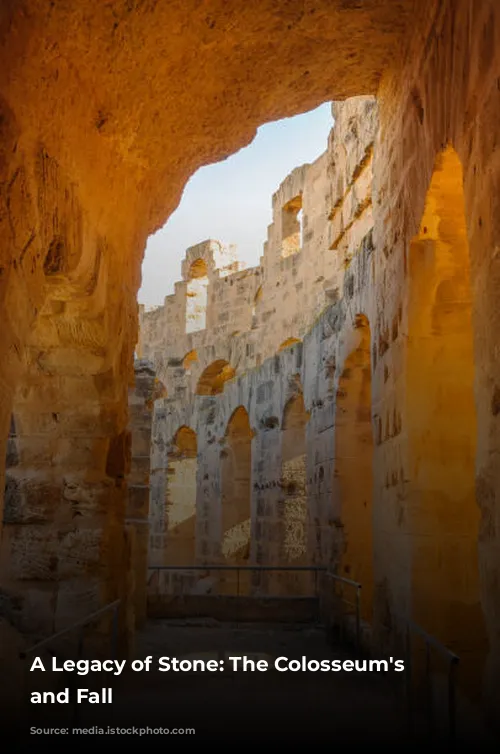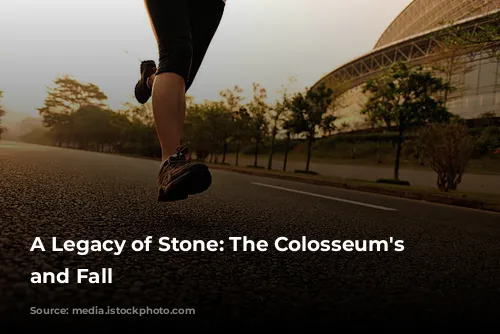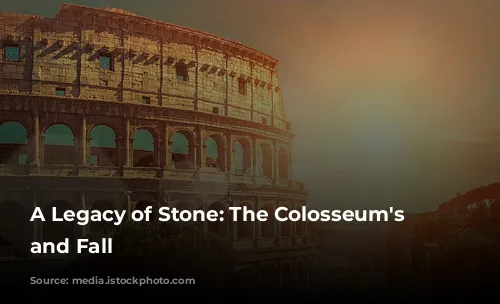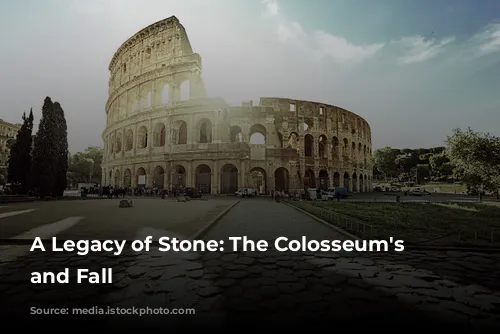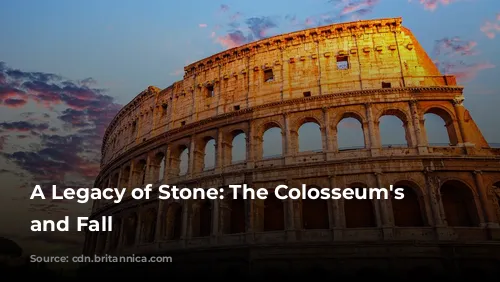The Colosseum, a towering testament to ancient Rome’s architectural brilliance, stands today as one of the few mostly intact structures from that era. More than just a breathtaking relic, it’s a major source of tourism revenue for Italy, generating over $63.3 million (€53.8 million) annually alongside the Roman Forum and Palatine Hill. This remarkable feat makes the Colosseum the top tourist attraction in Italy.
From Arena to Fortress: The Colosseum’s Changing Roles
The Colosseum’s grandeur didn’t last forever. After the fall of the Western Roman Empire, the arena fell into disrepair, its once-vibrant heart gradually overtaken by neglect. In the 12th century, powerful families like the Frangipane and Annibaldi repurposed it as their fortress, seeking protection within its imposing walls. Centuries later, in the late 15th century, Pope Alexander VI sanctioned its use as a quarry, stripping the Colosseum of its decorative elements. For over a thousand years, the Colosseum was left to crumble, a silent witness to the passage of time. Finally, in the 1990s, state-funded restoration efforts began, marking the start of a long-awaited journey to revive this ancient monument.
A Symbol of Power: The Colosseum’s Construction
The Colosseum was born from a desire to revitalize Rome after the tumultuous year of the four emperors in 69 CE. Emperor Vespasian, seeking to restore stability, envisioned the Colosseum as a grand entertainment venue, a place to captivate the Roman public with spectacles of gladiatorial combat, thrilling animal hunts, and even mock naval battles. These events were meant to distract the populace from the challenges of the time, and to reinforce the emperor’s authority.
A Labor of Blood and Stone: Building the Colosseum
Construction began under Vespasian’s reign, between 70 and 72 CE, with his son and successor, Titus, dedicating the completed structure in 80 CE. Emperor Domitian added the fourth story in 82 CE, completing this architectural marvel. However, the Colosseum’s construction was marred by a dark truth. It was financed with plunder from Titus’s sack of Jerusalem in 70 CE, built by enslaved Jews from Judea, a chilling reminder of the empire’s brutality.
An Architectural Masterpiece: The Colosseum’s Design
The Colosseum, also known as the Flavian Amphitheatre, is an elliptical marvel, meticulously crafted from stone, concrete, and tuff. Standing four stories tall, it stretches over 620 by 513 feet (189 by 156 meters), with the capacity to hold an astonishing 50,000 spectators. The Colosseum’s immense size and intricate design made it a beacon of Roman engineering, showcasing the empire’s mastery of materials and architectural principles.
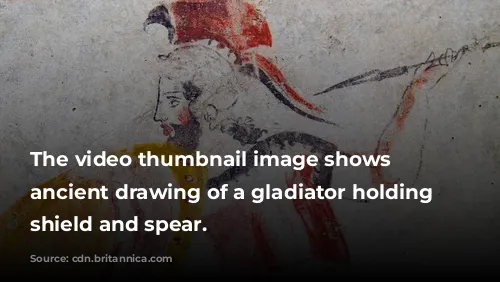
A Symbol of Roman Power: The Colosseum’s Location
The Colosseum wasn’t randomly chosen. It stands east of the Palatine Hill, replacing the artificial lake that adorned Nero’s Golden House. This deliberate choice was as much symbolic as practical. Vespasian, a man who ascended to the throne from humble beginnings, sought to replace the tyrannical Nero’s opulent display with a public amphitheater, a symbol of his commitment to the Roman people.

A Masterpiece of Engineering: The Colosseum’s Structure
Unlike earlier amphitheaters, the Colosseum is a freestanding structure, its grandeur built without the support of surrounding hillsides. It relies on a complex system of barrel and groin vaults, showcasing the ingenuity of Roman engineers. The three lower stories are adorned with arcades framed by engaged columns, representing the Doric, Ionic, and Corinthian orders. This arrangement of columns became a defining feature of Renaissance architecture. Travertine forms the main structure and facade, while volcanic tufa comprises the secondary walls, and concrete constructs the inner bowl and arcade vaults.
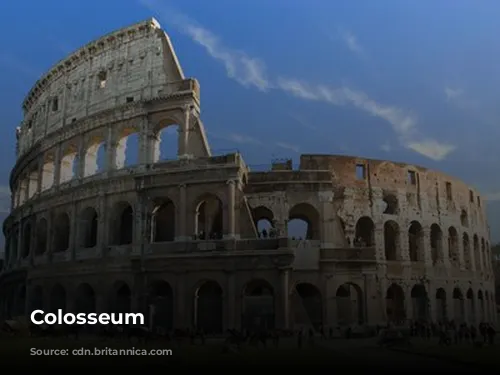
A Stage for Spectacle: The Colosseum’s Features
The Colosseum offered its audience a thrilling experience, protecting them from the sun with a massive retractable awning called a velarium. Supported by masts extending from corbels built into the top story, the velarium required hundreds of Roman sailors to manipulate its intricate rigging. The Colosseum witnessed countless gladiatorial combats, contests between men and animals, and even mock naval engagements, offering a glimpse into the Roman fascination with spectacles of violence and entertainment. The Colosseum’s role in the martyrdom of early Christians remains uncertain.
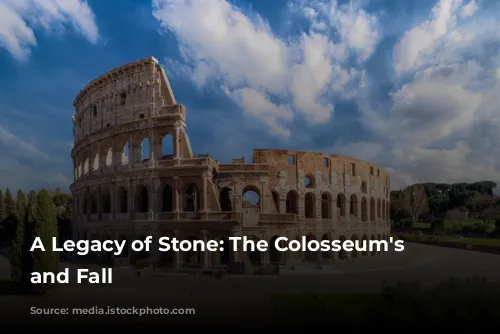
From Glory to Ruin: The Colosseum’s Decline
The Colosseum’s glory faded with the fall of the Roman Empire. It was repurposed as a church, then became a fortress for the Frangipane and Annibaldi families. Lightning strikes, earthquakes, vandalism, and pollution further damaged the Colosseum. The once-opulent marble seats and decorative elements vanished as the site was exploited as a quarry for over a thousand years.
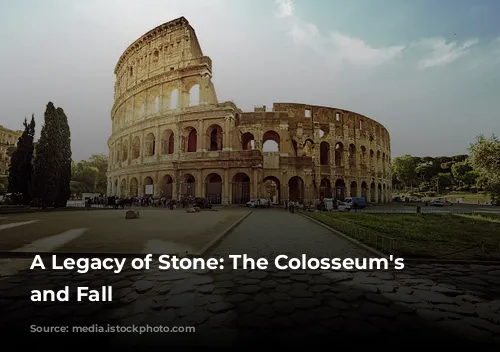
A Monument Restored: The Colosseum’s Revival
In the 19th century, preservation efforts began in earnest, led by Pope Pius VIII. The 1990s saw a major restoration project, breathing life back into this architectural masterpiece. Today, the Colosseum stands as one of Rome’s most beloved tourist attractions, drawing nearly seven million visitors each year. Regular exhibitions showcasing the rich culture of ancient Rome further enrich the visitor experience. The Colosseum stands as a reminder of Rome’s enduring legacy, a symbol of the city’s triumphs and tragedies.
